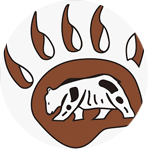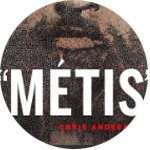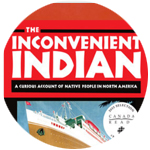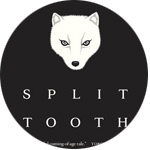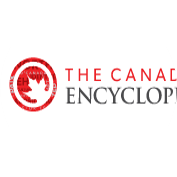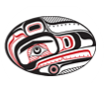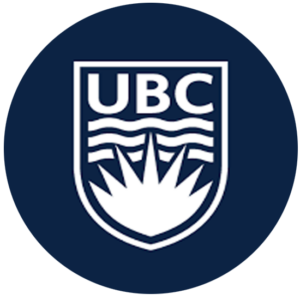Identity and Terminology
In this section, you will learn about the intricacy of identity and terminology as it relates to Indigenous peoples of Canada.
Introduction
In Canada, Indigenous Peoples are defined by two systems, one based on kinship and culture and the other in federal law and legislation enforced by the government. Within this guide Indigenous means First Nations, Métis and Inuit in which terms and identity can be complex to those unfamiliar with current and historical terminology. Indigenous lawyer and activist Pam Palmeter says, “Indigenous identity is so bound up in culture, language, territory, family, community, and history that the denial of any one of these factors can have traumatic effects on an individual’s identity and sense of self.”1
Terms defined by the government exist to control land, resources, and rights. Palmeter explains that the terminology embedded in The Indian Act of 1985 “reduce[d] the government’s financial obligations to Indigenous Peoples, and their methods were far from benign. From scalping laws to forced sterilizations, to residential schools and the Indian Act’s registration provisions, the methods chosen to achieve those policy objectives have focused more on eliminating Indians than assimilating them.” 2 While the term Indian is no longer used in general conversation, it is rooted in the legal terminology of the Indian Act and so remains the legal term for First Nations Peoples.
Legal Recognition
Palmeter explains why legal representation of Indigenous Peoples is important: “In roughly five hundred years, policies that define and control Indigenous People have managed to nearly wipe us out physically, culturally, and legally.”3 For example, the government decided through the enforced Indian Act that any Indian woman who married a non-Indian man would no longer be considered an Indian even though their kinship and culture was rooted in being Indigenous. Even if an Indian woman married a Métis man, her status as an Indian as defined by the federal government was revoked. Mary Two-Axe Earley: I am Indian Again tells the story of her 30 year fight with the federal government to have women recognized as equals in the Indian Act. These policies have shifted due to pushback over the years, yet complexities remain. To this day there are conflicts about who the federal government legally recognizes as a Status Indian, non-Status Indian, and a Métis person.
Until colonization, Indigenous identities did not encourage divisions. That changed when European conceptions of race separated Indigenous Peoples from Europeans and created internal divisions within Indigenous groups. These actions were deliberate and, according to Palmeter, were undertaken
to restrict the number of status Indians so as to ensure their extinction over time [and have] evolved outside the scope of the legislation, through internal policies created by INAC [Indigenous and Northern Affairs Canada]. Although the Supreme Court of Canada (SCC) found the Inuit to be “Indians” for the purposes . . . of the Constitution Act, 1867 . . . Canada amended the Indian Act to specifically exclude them from registration. . .Similarly, Métis People who took scrip are also excluded from Indian registration.4
Developing Identity
The Saddle Lake First Nation in “Reclaiming Our Identity, Band Membership, Citizenship and the Inherent Right National Centre for First Nations Governance.” says that it is important for Indigenous Peoples to develop their identity outside of the Indian Act’s parameters. Reclaiming Our Identity, Band Membership, Citizenship, and the Inherent Right National Centre for First Nations Governance:
We are constantly developing our identity, from birth to the end of our lives. We build it based on our relationships with relatives, friends, community, geography, language, and other social factors. When a child feels a sense of belonging to family, community, and peers he or she is better able to deal with adversity. Prior to contact, First Nations had their own histories and methods of determining our identity. We had matriarchal, patriarchal, clan and kinship systems. Before Europeans came to North America, First Nations communities or nations were sovereign nations, that is, we were self-governing.5
In recent years, Indigenous Peoples across Canada are demanding their right to return to self-governance principles that are at the core of Indigenous identity.
Shifting Terms
Terms that label Indigenous Peoples such as Status, non-Status, and Indian were created by settlers and the federal government. While they have shifted throughout Canadian history, they continue to contribute to a sense or loss of identity. The Indian Act defined “Indians” as “non-persons under the law” when it was first enacted which helped paved the way for racism within Canada. The term ‘Indian’ is outdated and should not be used. Derogatory words used to describe Indigenous Peoples should not be used and efforts to educate and eradicate the use of these types of words within everyday conversations, labels, team names, and land descriptions should be occurring.
Educational leaders can enact policies to ensure derogatory names are not being used within the halls, walls, and school wide communities. As well, it is important to begin to question place names that may celebrate the attempted genocide of Indigenous Peoples. Some schools across Alberta have and are renaming schools, places, team names and logo depictions as an act of reconciliation
The University of British Columbia says that “identity negotiations produce categories that can exclude as much as include particular groups of People. These categories create blanket assumptions and stereotypes accepted as natural by outsiders and may also be internalized by members of the group in question.”6
It is important to be aware of shifting terms. Indigenous Peoples have always had their own language and words to describe themselves and other Indigenous groups or peoples.. As Indigenous Peoples increasingly reclaim their identities, they are also reclaiming traditional terminology. It is important to respect changes to terminology. To better understand how terms can change for Indigenous Peoples, please watch Audrey Weasel Traveller’s video in the Walking Together Digital Resource. Although the term Indigenous is a common collective term encompassing First Nations, Métis, and Inuit, it is important to acknowledge the diversity of these 3 Indigenous groups.
Many Distinct Nations
There are many distinct First Nations within Treaty areas of Alberta — Niitsitapi “the real people” (Blackfoot Nation); Ahpikuni (Peigan); Southern Ahpikuni (Montana Blackfeet); Ahkainah (Bloods); Siksika (Blackfoot); Iyiniwok or Ininiwok, meaning “the People,” or Nehiyawak, “speakers of the Cree language” (Cree); Dene, Denesuline; Itsa Ĩyãħé, “The Pure People” (Stoney Nakoda); Anishnabe “‘the spirit that is lowered from above’” (Saulteaux, Ojibway) and Kanien’kéha (Mohawk) “People of the Flint” (Michel Band). These First Nations have distinct ancestral ties to the local land and are or were represented within Treaties and First Nations Reserves. Each First Nation is distinct and within Nations there are many First Nations reserves that are represented within either Treaty 4,6,7, 8 or 10.
Reserves were created to keep First Nations separated and isolated from each other in order for the colonial government to claim and control First Nations land. As colonial settlers increasingly demanded the most productive land, First Nations were forced onto reserves so they could be controlled. There are 140 First Nations reserves throughout Alberta with unique histories and contemporary realities while some First Nations groups such as The Michel Band and the Papashcase were cruelly, deceptively and forcibly disenfranchised. Not all First Nations in Alberta reside on reserves. There are many First Nations that make their home off reserve. To learn more about the identity of First Nations across what is now known as Alberta, build relationships with First Nations, local reserves and their schools, and Indigenous organizations.
Métis
The Métis are a distinct, strong Indigenous People and Nation whose Homeland includes areas much of present-day Western Canada and northern sections of the United States. Métis celebrate distinct kinship, traditions, languages, culture, politics, governance, and history. Métis are distinct from First Nations, and are called the Otipemisiwak (Free People). Rupertsland Institute, an affiliate of the Métis Nation of Alberta (MNA), defines Métis as:
having origins in the French language, translating to English as “mixed.” During the ethnogenesis of the Métis Nation, the term Métis was used to describe the children of First Nations peoples and EuroCanadian settlers. The generations who led the development of the Métis Nation reclaimed the term as a name for themselves. Today the term Métis properly refers to those who self-identify as Métis, are distinct from other Aboriginal peoples, are of historic Métis Nation Ancestry, and who are accepted by the Métis Nation. 7
Rupertsland Institute states:
Métis are a strong, Indigenous people who celebrate distinct kinship, traditions, languages, culture, politics, governance, and history. Métis are a collective of communities with a common sense of origin and destiny with kinship networks that span a historic homeland.1 They share a common Métis nationalism that is distinct from other local identities. Métis history begins with an ethnogenesis or emergence as a people and a Nation with a distinct ethnicity. Métis ethnicity has historical and ancestral connections to both First Nations and European relations. The unions between these two communities formed the first roots towards Métis nationhood. As communities of Métis people developed unique ways of being, doing, and knowing for themselves, they came together as a Métis Nation. 8
The Métis National Environment Committee explained that “during the fur trade era, long before Canada became a country in 1867, Métis People developed a unique culture, language, and identity. Specialized knowledge provided skills necessary for survival in an unforgiving wilderness.”9 Métis People fought hard to secure lands and rights, yet the government at the time violently pushed back. Later, scrip was introduced to deal with Métis land rights, yet the process was fraught with fraud and malice on the part of settlers and government. Today, Métis Peoples live throughout Alberta with some residing on one of the 8 Métis Settlements unique to Alberta. To begin learning more in depth connect with Métis People, Métis Locals, the Métis Nation of Alberta, Rupertsland Institute and refer to the online resources listed below .
Inuit
Inuit traditionally had one name which was given at birth to honour and recognize a loved one in the family or community. Traditional names, however, were often mispronounced or misspelled when writing systems were introduced by the missionaries. As such, identifying and tracking support for Inuit became a bureaucratic challenge for the government, missionaries, and healthcare system. The absence of surnames also created challenges for census-taking and the registration of vital statistics records, such as births, deaths, and marriages.
It was not until the early 1940s that the Eskimo Identification numbered discs were introduced to the Inuit and distributed by the Royal Canadian Mounted Police. This disc system was based on the military numbering system and distributed for the purposes of, for example, tracking hunting, trapping, education, hospitalization, and misdemeanors.
The disc system was eventually discontinued by the 1970s as Project Surname was introduced with the intent to persuade Inuit adults to forgo their use of a traditional singular name and adopt a surname or family name. To assist in this process, Abe Okpik, an Inuk and government employee, traveled to each settlement in the Arctic to meet with individuals and families, and record their chosen surnames. This process often resulted in the head of the household selecting their Inuit name as a surname or family name. As a result, some siblings had different last names, which ultimately made tracing family genealogy difficult.
The Inuit Tapiriit Kanatami (ITK) is a national organization that protects and advances the rights and interests of Inuit in Canada. ITK states: “We have lived in our homeland since time immemorial. Our communities are among the most culturally resilient in North America. Roughly 60 percent of Inuit report an ability to conduct a conversation in Inuktitut (the Inuit language), and our people harvest country foods such as seal, narwhal, and caribou to feed our families and communities.”9 To learn more, connect with Inuit, organizations and refer to the resources listed below.
Original Family Names
To further this dialogue, it is important to acknowledge that many families have been disconnected from their original Indigenous names, which further disconnected Indigenous Peoples from an inherent sense of self. Policies such as “Project Surname” and the “Eskimo Tag System” attempted to erase Inuit naming, kinship and spiritual beliefs that were traditionally given at birth and passed on through generations.
Indigenous names hold stories, lineage, and strengths that help nurture a strong sense of identity. Valerie Alia says that
names are the cornerstones of cultures. They identify individuals, represent life, express and embody power. When power is unequal and people are colonized at one level or another, naming is manipulated from the outside. In the Canadian North, the most blatant example of this manipulation is the long history of interference by visitors with the ways Inuit named themselves and their land.10
It wasn’t only the Inuit who had their names taken from them — in Residential Schools, children were often referred to as numbers, names were forcibly assigned, and original family given names were often eradicated.
Naming continues to be an integral aspect to many Indigenous Peoples way of life. Naming ceremonies are done by many and often a person will have their spiritual name as well as their other name that may be used on a day to day basis. Some Indigenous people are reclaiming their Indigenous names or naming their children with names in their original language. It is important to teach acceptance of Indigenous names in the classroom and social setting so students who use their Indigenous names feel accepted. Name based racism continues to occur in contemporary contexts.
Renaming
It is important to consider renaming or naming places to reflect reconciliation. Some schools are going through the process of changing school names, team names and mascots. The Calgary Board of Education (CBE) went through the process of changing the name of the Langevin school as he is considered one of the architects of the residential school system. Students advocated for over four years to have the name changed yet the process did not begin until mainstream knowledge of mass grave sites were exposed at former residential schools.
In 2017 the City of Calgary changed the name of a downtown bridge from Langevin to Reconciliation Bridge. Most recently, students and advocates within CBE are urging the district to rename Sir John A McDonald Junior High School as an action towards reconciliation.11 Similar actions are taking place in schools throughout Edmonton for similar reasons including a school named after a former mayor who was a supporter of the Klu Klux Klan. 12
While some argue that changing names is considered “cancel culture,” others agree it is “accountability culture” which is an action that is necessary to acknowledge the truth of Canadian history which will help shape a more positive future for both Indigenous and non-Indigenous. Some school leaders are taking the initiative to name new buildings in memory or honor of local Indigenous leaders of the past and present. Fort McMurray Catholic Schools recently named their newest school Elsie Yanik Catholic School. Elsi Yanik was a well known and respected Métis Elder who “was the embodiment of kindness, gratitude, compassion, justice, and wisdom.” 13 Wildrose School district is naming a new school after Charlotte Small, a historical Métis woman, Edmonton Public Schools recently named a school after artist Alex Janvier, and the Calgary Board of Education named a school after artist Joane Cardinal-Schubert.
It is also important to pay attention to logos and school team names to ensure they are appropriate and do not perpetuate continued racism and genocide. Western Canada High School, in Calgary, underwent the process of changing their team name and logo from Redmen to Rehawks. 14 Although the process took time , it was necessary to ensure the voices of the community both past and present, Indigenous and non-Indigenous , (CBE Elder Advisory Council, alumni, students , staff , parents , Board of Trustees) were part of the consultation process. 15 This process led to a deepening of the acknowledgement of the harm that has and is being done to Indigenous Peoples resulting in taking action as part of reconciliation.
Meaningful Relationships
Navigating through terms in relation to ‘what do I refer to them/you as’ is only one small step in understanding and valuing ‘who a person is.’ The acronym FNMI is often used within the education system to describe First Nations, Métis, and Inuit yet it is important to make the effort to say the full or exact terminology rather than labeling a student or initiative as an acronym. A part of the relationship building process involves getting to know the Indigenous staff, students, and community members within your local community. When leaders build meaningful relationships with First Nations, Métis and Inuit groups, communities, or individual people they will begin to acknowledge, understand, and value how to respectfully refer to or describe who they are building a relationship with. Getting to know one another on a first name basis strengthens relationships and connection to one another. Leaders can begin the relationship process by at least knowing the names of the nations that surround them. Leaders can begin to know the identities of the people around them for example by knowing who the local Chiefs or leaders are, or whether there was a Residential or Day schools in the local area. Leaders can ask themselves if there are First Nations , Métis and or Inuit centres or cultural activities that they might be able to join. Show interest in becoming familiar with the Indigenous Peoples closest to you.
Bob Joseph provides 7 tips for nurturing relationships with Indigenous Peoples that you should consider;
- Be trustworthy
- Be transparent
- Be respectful
- Be invested
- Be involved
- Be patient
- Choose your team carefully 16
To gain further insight into the various terms and identity conversations happening in relation to Indigenous People refer to the resources listed below.
Reflection
1. How can school and system leaders support students, staff, and community to address and eliminate negative stereotypes and labels that are put on Indigenous Peoples to advance reconciliation and opportunities for respectful relationship building?
2. How does legislated identity affect Indigenous Peoples?
3. What actions can leadership take to create the conditions for Indigenous students and their families and staff to be better understood and be proud of their Indigenous identity?
4. One thing that I can do in my district/school to help carry the work of reconciliation is ……
5. How is the relationship between names and identity important and how can you contribute to uplifting the value of naming?
6. How would you go about naming or renaming a place in your school district or school with an Indigenous name?
Related Resources
There are many terms that are used to describe First Nations, Métis and Inuit in Canada. This document provides some guidance and clarity in relation to terminology.
This map features various distinct nations, Treaty areas, Métis Settlements and zones within Alberta.
This portion of the digital professional development site that feature foundational knowledge content from Elders across the province speaks to identify and terminology.
Informative resource on key topics relating to the history, politics, and cultures of the Aboriginal Peoples of Canada. This link features an academic overview of identity, Terminology, Identity & the Classroom and Identity & Terminology.
This interactive lesson plan speaks to Métis Identity and is grade level appropriate for K-3.
A print and web version of this resource includes contemporary and historical photography, maps and written descriptions on a variety of topics written by Indigenous Peoples. This page speaks to Métis Identity.
A downloadable book about Canada-Inuit relations to help educate and inform policy development.
A print and web version of this resource includes contemporary and historical photography, maps and written descriptions on a variety of topics written by Indigenous Peoples.
The primary objective of early Indian policy was to ensure the eventual disappearance of Indians – a goal which has not changed in hundreds of years…
This video was created in collaboration with Northern Lakes College. Please join Dylan Turner and Jerome Chabot talking about Métis Identity and Métis Culture and Reconnection.
This video features Traditional ceremonies as a place where you can learn about who you are and where you come from.
Understanding Aboriginal Identity explores the complex issue of self-identification for Aboriginal People.
Amiskwaciy History Series. Jerry and Jo-Ann Saddleback: Traditional Concepts of Family and Community
This video speaks to tradtional concepts of family and community.
ASBA Indigenous Advisory Circle members provide an overview and some insight into Inuit culture.
ASBA Indigenous Advisory Circle Members talk about an overview and some insight into Métis culture.
ASBA Indigenous Advisory Circle Elders talk about the importance of the family in Indigenous culture; how it facilitates the passing on of values, traditions and ceremony.
An advocate for Indigenous worldviews, the author discusses the fundamental issues the terminology of relationships; culture and identity; myth-busting; state violence; and land, learning, law and treaties along with wider social beliefs about these issues.
This book is a concise history of government-sponsored interference with Inuit identity.
Anderson discusses what “Métis” means… From its roots deep in the colonial past, the idea of Métis as mixed has slowly pervaded the Canadian consciousness until it settled in the realm of common sense. In the process, “Métis” has become a racial category rather than the identity of an Indigenous People with a shared sense of history and culture.
Through the discussions of traditional life, importance of language as a vehicle of culture and identity is stressed in this book.
BOOK: The Inconvenient Indian is at once a “history” and the complete subversion of a history—in short, a critical and personal meditation that the remarkable Thomas King has conducted over the past 50 years about what it means to be “Indian” in North America.
Using a sweeping narrative focusing on the lives of the students, award-winning investigative journalist Tanya Talaga delves into the history of this small northern city that has come to manifest Canada’s long struggle with human rights violations against Indigenous communities.
Marilyn Dumont’s Métis heritage offers her challenges that few of us welcome. Here she turns them to opportunities: in a voice that is fierce, direct, and true, she explores and transcends the multiple boundaries imposed by society of the self.
BOOK: Tagaq moves effortlessly between fiction and memoir, myth and reality, poetry and prose, and conjures a world and a heroine readers will never forget.
BOOK: A historically accurate and completely engaging account of the Metis Nation.
Highlights the contributions that these 10 Indigenous People have made in their community and Canada.
Learn about First Nations, Métis and Inuit music and dance.
Many myths about Indigenous Peoples contain an element of truth, but most are “wide of the mark”, according to Bob Joseph in this eBook. Outlining nine myths deeply rooted in the minds of some Canadians, Joseph provides a snapshot of each, then discusses the reality for Indigenous Peoples.
Rupertsland Centre for Teaching and Learning (RCTL) envisions education in Alberta to include an understanding of Métis foundational knowledge, Métis content and Métis resources for ALL learners and educators to access in an authentic, purposeful way.
Métis Foundation Knowledge Themes include Language, Culture and Traditions, Métis in Alberta, Homeland History, and Métis Nation Governance. These five themes are excellent resources to learn about Métis foundational knowledge, which were developed over the past few years involving a comprehensive engagement with the Métis community.
This powerful educational resource was designed to acknowledge, highlight, and share Métis residential school survivor experiences in collaboration with respected Métis Elder Angie Crerar, Co-Author Jude D. Daniels, Canadian artist Lewis Lavoie, Métis community, Rupertsland Institute, and Werklund School of Education. Mural image inspired by Métis Artist Samantha Pratt.
Videos with Métis foundational knowledge content.
The Métis Foundational Knowledge Moodle Course is based on the Foundational Knowledge Themes published by Rupertsland Institute.
RLI’s RECC Room is a virtual gathering space for all those interested in advancing Métis education. Everyone is welcome to sign up to learn more about how to access a variety of programs for both Métis and non-Métis learners of all ages.
Valerie Alia. Contrary to the dire predictions of cultural genocide theorists, Inuit culture – particularly traditional naming – has remained extremely strong, and is in the midst of a renaissance.
A comprehensive downloadable pdf with recommended terminology and language use guide developed by the University of British Columbia
A short video about terminology relating to Indigenous people designed for children
” The purpose of the School Naming Committee (the “Committee”) is to assist the Board of Trustees in the naming of a school.
Footnotes
| 1 | Palmater, Pamela. “Genocide, Indian Policy, and Legislated Elimination of Indians in Canada.” Aboriginal Policy Studies. Vol. 3, no. 3, 2014: 27–54. https://journals.library.ualberta.ca/aps/index.php/aps/article/view/22225/pdf_22. |
| 2 | Neu, D. and Therrien, R. Accounting for Genocide: Canada’s Bureaucratic Assault on Aboriginal People (Halifax: Fernwood Publishing, 2004); Palmeter, Pamela. “Stretched Beyond Human Limits: Death by Poverty in First Nations.” Canadian Review of Social Policy No. 65–66, 2011: 112–27. https://crsp.journals.yorku.ca/index.php/crsp/article/view/35220 |
| 3 | Palmater, Pamela. “Genocide, Indian Policy, and Legislated Elimination of Indians in Canada.” Aboriginal Policy Studies. Vol. 3, no. 3, 2014: 27–54. https://journals.library.ualberta.ca/aps/index.php/aps/article/view/22225/pdf_22. |
| 4 | Ibid. |
| 5 | 5 Saddle Lake Cree Nation. “Reclaiming Our Identity Band Membership, Citizenship and the Inherent Right National Centre for First Nations Governance.” http://www.saddlelakecreenation.ca/assets/reclaimingouridentity_paper.pdf |
| 6 | University of British Columbia. Indigenous Foundations. Website. https://indigenousfoundations.arts.ubc.ca/identity/. |
| 7 | Admin. “Empowering Educators.” Rupertsland Institute, Métis Culture and Traditions. p. xi Retrieved from https://www.rupertsland.org/wp-content/uploads/2022/03/Metis-Culture-and-Traditions-Foundational-Knowledge-Themes-01.25.22.pdf |
| 8 | Admin. “Empowering Educators.” Rupertsland Institute, https://www.rupertsland.org/teaching-learning/empowering-educators/. |
| 9 | Inuit Tapiriit Kanatami. “About Canadian Inuit.” Web Page. https://www.itk.ca/about-canadian-inuit/ |
| 10 | Alia, V. Names, Numbers, and Northern Policy: Inuit, Project Surname, and the Politics of Identity. (Halifax: Fernwood Publishing, 1994). |
| 11 | Calgary Herald. Calls renewed to change the name of Sir John A. Macdonald junior high school. Retrieved from https://epaper.calgaryherald.com/article/281672553451510 |
| 12 | https://www.iheartradio.ca/newstalk-1010/instagram/edmonton-public-schools-to-consider-renaming-prince-charles-school-creating-renaming-committee-1.16005213 |
| 13 | Fort McMurray Catholic Schools. About Us. Retrieved from https://elsieyanik.fmcschools.ca/about-us/ |
| 14 | Franklin, M. CTV. ‘Redmen’ no more – Calgary high school changes team name. 2014.https://calgary.ctvnews.ca/redmen-no-more-calgary-high-school-changes-team-name-1.1887456 |
| 15 | CBE. Governance Culture. https://calgary.ctvnews.ca/calgary-board-of-education-adopts-policy-on-changing-names-of-schools-1.5482728 This process led to a deepening of the acknowledgement of the harm that has and is being done to Indigenous Peoples resulting in taking action as part of reconciliation |
| 16 | Joseph, Bob., 7 tips on building relationships with indigenous peoples. https://www.ictinc.ca/blog/7-tips-on-building-relationships-with-indigenous-peoples |










